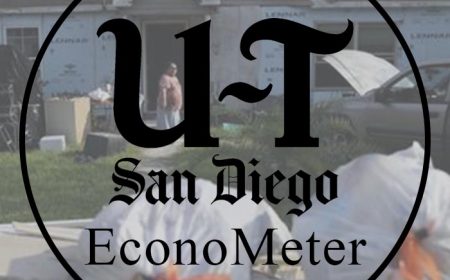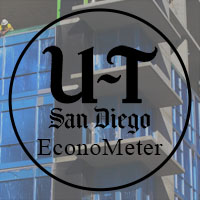Entrepreneurial Success in Today’s Ridiculously Ugly Hotel Environment
Five strategical points that will lead to success: location, product, management, marketing and financial structure.
There are over 450 hotels in San Diego County, representing over 57,000 rooms and suites. Chains and institutions own most of the larger hotels, but small business operators own many. It takes an entrepreneurial spirit as well as a willingness to take financial risk to be successful in this game. After all, hotel performance has ups and downs. The capital markets virtually walk away from the hotel market when times are tough…and tough is an understatement today.
This year, at each lodging conference, analysts talk about the commoditization of the industry due to the transparency of rapidly declining rates, difficulty in obtaining any kind of financing and the inability to determine where the bottom of this cycle is. Generally, the conversations have turned rather pessimistic for the short term. Hence, is it a good time to get in the game? My typically contrarian answer is yes. San Diego’s lodging industry is resilient and growing, and with the proper ingredients, success is very possible.
Today, the supporting team is more important than ever before. The pace of change in technology alone keeps most entrepreneurs close to a technology advisor. Further, investors, partners and lenders are often required and these individuals can make or break a business plan. The quality of and relationship with key employees and team members is paramount to the success of a hotel. One entrepreneur cannot optimize revenues and expenses, go out and make sales calls and handle the financial end of the business.
Beyond those basics come important decisions such as market mix. Is it preferable to have a strong base of business at a discounted price to ensure operating leverage? Operating leverage is created when fixed costs have been met and additional revenues “flow-through” to the net income line.
On the strategy side, there are five key points that can provide the framework for success. These are location, product, management, marketing and financial structure. The first point, location, has everything to do with the sub-market in which the hotel competes. As an example, an area that has strong barriers to entry (government regulations, cost of land or other barriers) is a safer bet than an area where there is no limit to the amount of new supply coming in.
Moreover, location refers to the market demand generators. Are they mid-week only? Are they susceptible to economic downturns? Is the property highly visible and accessible? Rank the location 1-5 and remember that markets are dynamic…a weak site one day could be a strong site when a new road opens. A strong market should include multiple types of demand generators such as corporate, leisure and group.
The second strategy for success is the product. This might include choosing the right brand. While Marriott, Hilton, Starwood and Intercontinental Hotel Group are four of the main franchising companies, there are products that might compete favorably to these brands at certain price points. The “verticality” of brands (i.e. Marriott’s Fairfield Inns, Courtyard, Residence Inns, Marriott Hotels and Resorts, Hilton’s Hampton, Hilton Garden Inn, Homewood, Doubletree, Embassy, Hilton Hotels, etc.) makes the market very complex. Additional critical points to review include system reservation performance, impact policy, recommendations from other franchisees, support for the property and growth of the brand.
The third and fourth strategies, marketing and management, can be the difference between being able to pay the lender or not. Some firms are good at marketing and driving top line revenues in this new Internet and social media marketing era. Others are good at management and controlling expenses. Some charge back their corporate overhead, others charge only for direct property expenditures. Determining the marketing and management approach might be the difference between a good return on investment and one that is unsatisfactory or worse. It is hard to find that balance of good marketing and management.
It is virtually impossible to succeed without the proper financial structure (fifth strategy) in place. Key elements of the structure include project costs and interest rates. Today, first mortgage money is typically low leverage (if available at all), averaging just 60-65 percent of project or acquisition cost. This may generate a need for a second mortgage or mezzanine loan. Since this money is higher risk, it has a premium attached to the rate. A structure today may be 65 percent first mortgage debt at 8 percent interest, 15 percent mezzanine debt at 12 percent interest plus 20 percent borrower equity. The blended cost of capital is likely to be in the 9-10 percent range.
A return on investment analysis will determine if the project will succeed. This is the single most important element in the decision to purchase a distressed asset…if there is no return, it’s much easier to put money in the bank even at two percent interest if the return on capital is only going to be three percent anyway! The institutional funds have invested in the full-service, upscale lodging sector and have tough decisions ahead…sell, walk away or hold on. This leaves an opening for the entrepreneur today to look at turn-around opportunities and focused-service hotels.
Entrepreneurial success is never certain; however, there are some key tenets that are clearly required including persistence, hard work and honesty. Also, avoid mediocrity, move quickly with reversible decisions and slowly with non-reversible decisions, seek out committed people, review accountability for everything and do not be a spectator…in other words, get in the game! Now all that is needed is the goal and a set of action steps to achieve the goal. If the entrepreneurial spirit lifts you, go for it! Have a great 2010!
Robert A. Rauch, CHA
Robert Rauch is the founder of www.hotelguru.com and is president of R. A. Rauch & Associates, Inc., Chairman of the Board of Directors of San Diego.com, Chairman of the San Diego North Convention & Visitors Bureau and on the board of several organizations. His company provides management and asset management services for distressed assets in addition to the owned and operated hotels in their portfolio.







